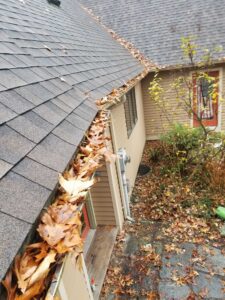
Every year my company receives many emails and calls from clients and other area residents concerned that their lawn like its dead/dying and reporting it has a reddish tone on the blades of grass. Almost 100% of the problem is common Red Thread.
What is Red Thread?
Red thread is a common lawn disease caused by the fungus Laetisaria fuciformis. It is a relatively minor disease that primarily affects the foliage of grass blades. While it may not kill turf crowns or roots, severe and recurrent infections may eventually weaken the overall health of the turf. In this blog, we will discuss the causes, symptoms, and management of red thread in residential lawns.
Will it kill my lawn?
This is the question we get asked first and the answer is, NO. Red thread will generally resolve itself over time and recovery can be aided by some of the things mentioned below.
Causes of Red Thread in Lawns
Red thread occurs on turf that is growing slowly due to low fertility, lack of sunlight, drought, or other sources of stress. The fungus survives in infected plant material or as desiccated stroma during unfavorable periods. Reproductive structures are spread by water, wind, equipment, and people. The fungus requires a film of moisture on leaves for germination and infection. Red thread is most common in the cooler weather of spring and fall when the turf is still growing slowly.
Symptoms of Red Thread in Lawns
The symptoms of red thread appear as roughly circular, pinkish-red to tan patches, 2-4 inches in diameter. The fungus produces a red or dark pink stroma, which can be seen with the naked eye on infected leaves. A mix of healthy and diseased grass blades gives the turf a ragged appearance. In dry conditions, the stroma becomes brittle, easily broken, and detached, and may be spread by equipment or fall into the thatch where they remain viable for up to two years. Under wet conditions, pink, cottony tufts of mycelium and spores may be produced.
Management of Red Thread in Lawns
Cultural management is the most effective way to control red thread in residential lawns and can be resolved by doing the following:
- Maintain adequate soil fertility by adding potassium, phosphorus, calcium, and nitrogen as suggested by soil tests.
- Apply a light amount of quick-release nitrogen to reduce disease severity.
- Maintain proper soil pH between 6.0 and 7.0.
- Turf should be watered deeply and infrequently to avoid moisture stress.
- Watering in the late afternoon or evening should be avoided to prevent extended periods of leaf wetness.
- Remove morning dew from the grass by blowing it off with a leaf blower or by utilizing a garden hose and pulling it through the lawn to remove water droplets.
- Improve air circulation and increase light penetration by pruning trees and shrubs.
- Minimize damage to turf by ensuring mower blades are sharp to prevent ripping/tearing of grass blades.
- Reduce the amount of fungal stroma that is incorporated into the thatch by collecting grass clippings when the disease is active or turf is growing slowly.
- Improve lawn health and reduce the risk of red thread by overseeding with resistant varieties of turfgrass such as perennial ryegrass, fescues, and Kentucky bluegrass.
Note: Fungicides are available for red thread, but applications are seldom necessary/recommended for management, especially in residential settings.
If you have a lawn company doing your lawn care ask/request that they do these things:
- Ensure adequate soil fertility: Ask your lawn care company to do a soil test and make recommendations to adjust or add supplemental treatments to add nutrients like potassium, phosphorus, calcium, and nitrogen as needed.
- Watering: If you have an irrigation system ask them to adjust your program to make sure your not watering too late in the day and ensure the lawn is getting adequate water.
- Mowing: Ask your lawn company to maintain proper mowing height and ensure that their mower blades are sharp to prevent ripping and tearing of grass blades.
- Thatch management: Request that your lawn care company manage thatch by regularly removing grass clippings when the disease is active or turf is growing slowly to reduce the amount of fungal stroma that is incorporated into the thatch.
- Overseeding/Reseeding: Ask your lawn company to overseed with resistant varieties of turfgrass such as perennial ryegrass, fescues, and Kentucky bluegrass.
By taking these preventive measures, you can reduce the risk of red thread in your lawn and ensure that it stays healthy and green.
Just remember, Red Thread is a common fungal disease that can make lawns look crummy, but it is not a major threat to the overall health of the turf. If your lawn is infected with Red Thread, it can recover, and steps can be taken to help its recovery. By implementing proper cultural management practices such as maintaining adequate soil fertility, proper watering, improving air circulation, and reducing damage to turf, you can prevent and manage the disease. Additionally, overseeding with resistant varieties of turfgrass and keeping mower blades sharp can further improve lawn health and reduce the risk of Red Thread.

ABOUT THE AUTHOR
Tory J. Chlanda is a Landscape Designer and entrepreneur based in Western Massachusetts. He has extensive experience in horticulture, design, and installation, which he gained from his travels around the world. Tory’s expertise has been recognized in various publications, including Landscape Construction Magazine, New England Home Magazine, and Living Spaces Magazine. He is a service business owner and when he is not working in the green industry, he can be found exploring new ski slopes in Colorado and Utah or enjoying outdoor activities such as hiking and snowshoeing.




